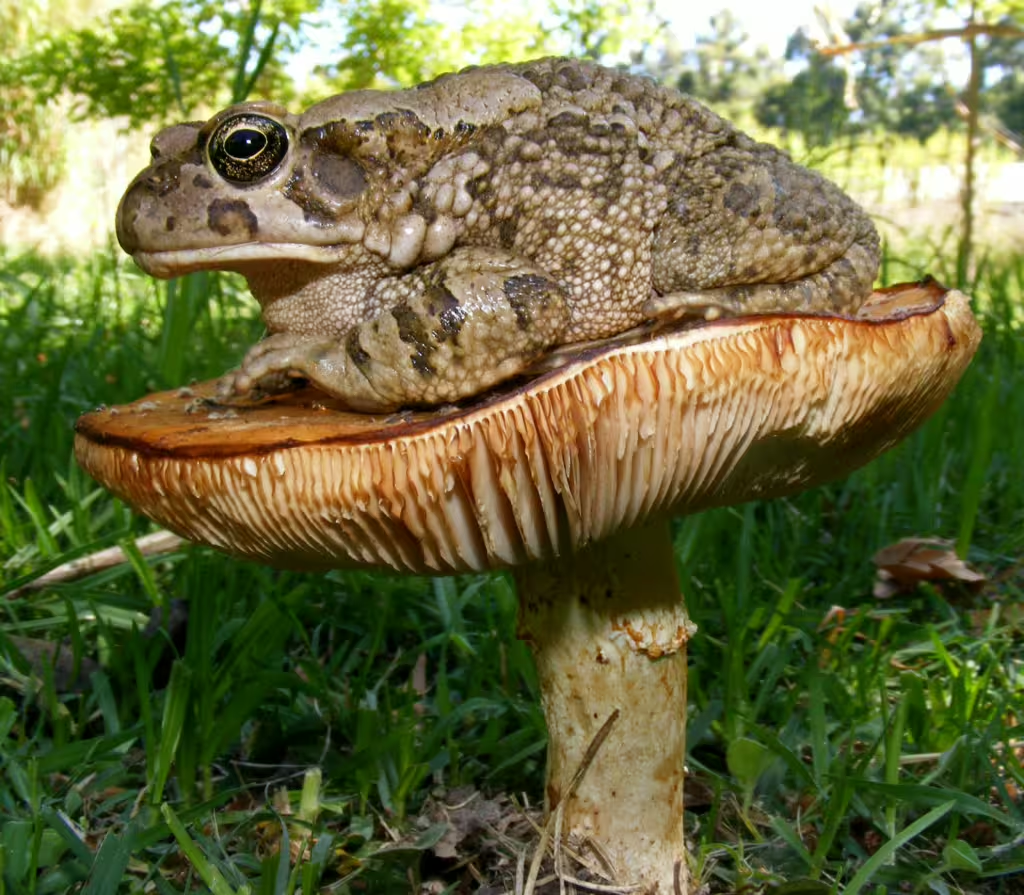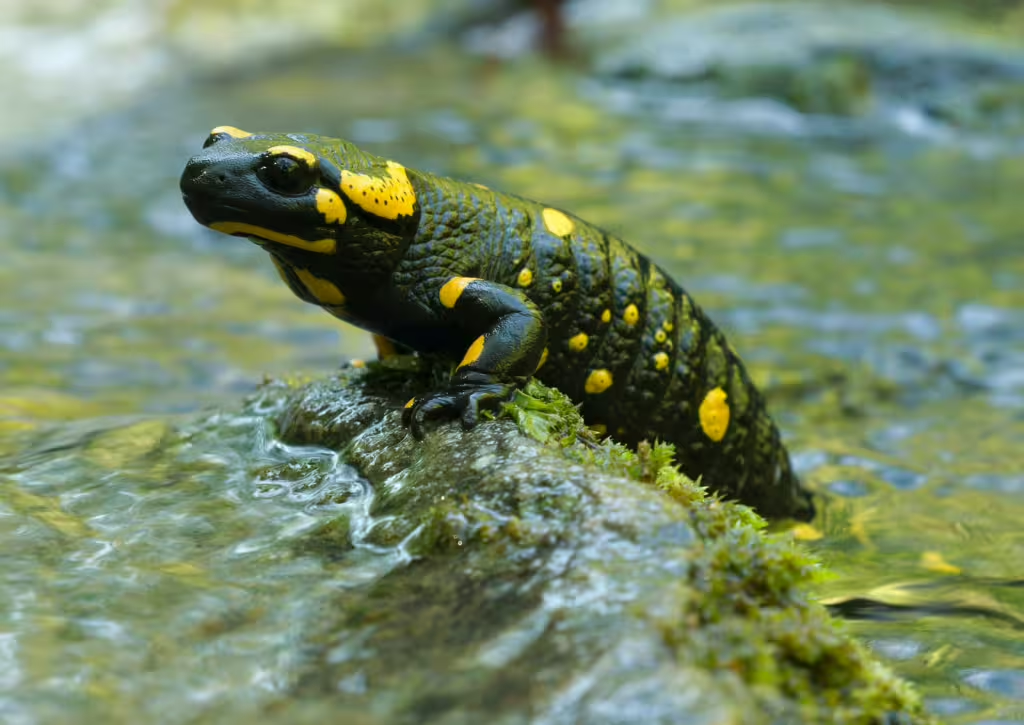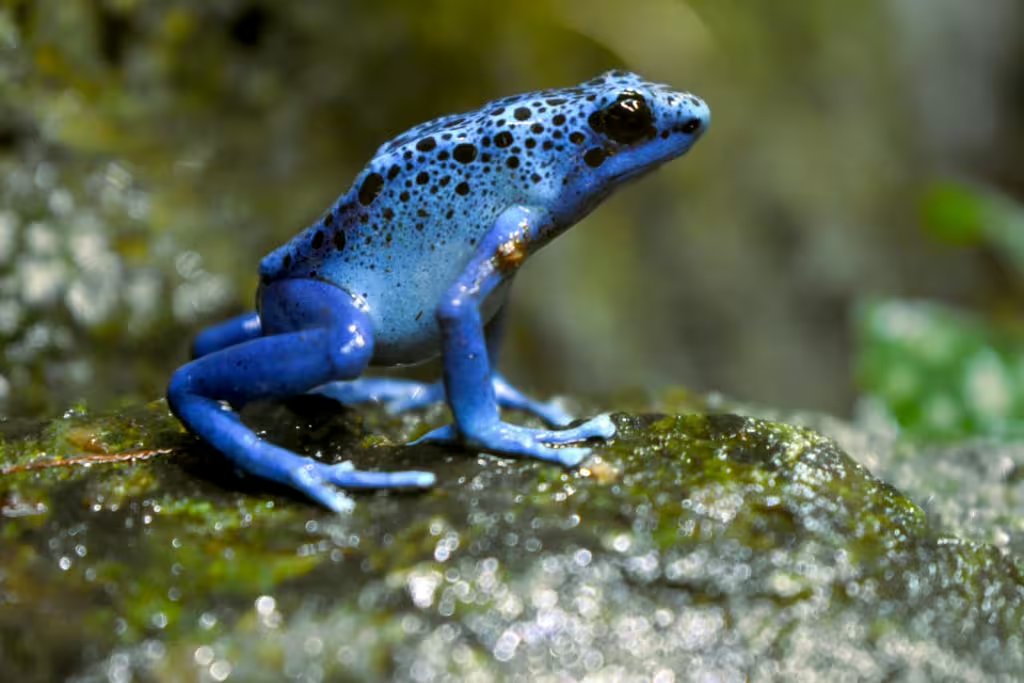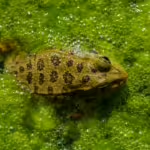As unassuming as they might seem to many of us, amphibians are among the most fascinating and diverse animals on the planet Earth. Most of us remember them fondly from children’s’ books, days out in the woods, or turning over rocks in streams, but beyond the youthful, plebeian pursuits of frogs, toads, and salamanders, the amphibians’ purpose is much more integral to the planet’s rich array of biodiversity.
Despite their somewhat squishy countenance, amphibians are actually quite adaptable and can be found on every continent except for Antarctica. These funny, little critters inhabit a variety of ecosystems, from tropical rainforests to arid deserts; and those that live in either have evolved ways to suit those diverse biomes. This group includes frogs, toads, salamanders, newts, and caecilians; each species and subspecies is unique in its own way, and each one is important to maintaining the ecological balance in its repsective ecosystem.
Perhaps, as a result of their existence in two worlds—aquatic and terrestrial niches—most, if not all, amphibians face significant threats due to human activities. In this article, will will explore why amphibians are so vital to their ecosystems. We will talk about some of the dangers they face thanks to humanity, as well as their most remarkable adaptations. So don’t be shy, dear readers, hop right in!
The Importance of Amphibians in Ecosystems
As we mentioned, amphibians play an essential role in maintaining the health of their home ecosystems. This is partially because of their unique life cycle, one which often involves both aquatic and terrestrial stages, and partially because of what they eat and what eats them. That two-part life cycle is the first thing we will mention, as it means these animals are sort of a crucial links between two different habitats. Their preferred prey, the creatures that prey upon them, and their overall health represent three key areas that highlight their ecological importance.

Pest Control
The favorite food of many amphibians, particularly frogs and toads, are insects and other small arthropods. These animals consume large quantities of such insects, making them an all-natural method of pest control. This means that an amphibian’s presence in a given ecosystem is a way of nature managing its own insect population. The result of an amphibian’s voracious appetite can be a reduced spread of disease in some areas, particularly when it comes to diseases that affect humans. Mosquitoes and other flying insects often carry things like malaria and dengue fever, both of which have no affect on a hungry frog’s belly. What this boils down to is that without amphibians, the unchecked growth of insect populations could have severe consequences for both human and the health of local animals.
Prey for Other Species
In addition to being hungry bug munchers, amphibians also happen to be delicious to many creatures from birds to crocodiles, to the French. We joke, of course, but frogs, toads, and salamanders form a critical part of their respective food webs. Whether they are serving as prey for birds, fish, mammals, reptiles, or even larger amphibians, their role remains the same; they are a nutritious lunch for many creatures hoping to find a meal. The disappearance of amphibians would create a cascading effect in a given ecosystem. These events are often referred to as trophic cascades and they can disrupt food chains and threaten biodiversity wherever they occurs.
Bioindicators of Environmental Health
Amphibians, as creatures of land and water, have permeable skin; an adaptation that makes them truly unique in the animal kingdom in many ways. Unfortunately, this means that they happen to be highly sensitive to environmental changes, pollution, and climate fluctuations. Yet, while this is pretty bad news for the amphibians themselves, it is actually quite helpful for the scientists and conservationists that want to save them. We will explain, of course. Essentially, a declining amphibian population is often a signal to scientists that problems such as pollution, habitat destruction, or climate change are especially severe in a given ecosystem. Thus, by monitoring amphibians, experts can detect early signs of ecosystem distress and take measures to mitigate any further environmental damage.
Human Threats to Amphibians
Adaptable though they might be, amphibians are still among the most threatened groups of animals on the planet. Nearly one-third of all amphibian species are at risk of extinction in the modern age. Here are some of the main threats these amazing creatures face:
Habitat Destruction
Deforestation, wetland drainage, and the perpetual development of urban centers have led to severe habitat loss among amphibians all over the world. This is partially due to the fact that many amphibian species rely on specific breeding sites, such as vernal pools, for reproduction. When these habitats are destroyed, populations decline rapidly, and often don’t recover with enough speed to make a difference.
Pollution and Chemical Contamination
Pesticides, herbicides, and industrial pollutants are terrible for all living things, but when they poison amphibians, the results are particularly devastating to entire populations, often for years to come. Chemical pollution can lead to deformities, reproductive issues, and death in amphibian populations. This may be due to the fact that these animals absorb water through their skin, a trait that makes them highly vulnerable to any foreign contaminants in their environment.
Climate Change
Climate change is among the greatest ecological threat facing our planet. It is believed that if something is not done soon, the climate changes will be irreversible, pushing humanity and all our animal neighbors towards a slow, destructive extinction that we are ill-prepared to face. As one might expect, rising global temperatures, changes in precipitation patterns, and extreme weather events are already altering the delicate ecosystems that most amphibians rely on for survival. In some cases, certain species are already struggling to adapt to these rapid environmental shifts.
Diseases
Many amphibian species are also contending with new and dangerous diseases, such as chytridiomycosis, a fungal disease caused by Batrachochytrium dendrobatidis. This disease has already decimated amphibian populations all across the globe. It spreads rapidly in moist environments, the favored home of most of these semi-permeable creatures, and that has led to the decline or extinction of numerous amphibian species worldwide.
Invasive Species
The introduction of predatory or disease-carrying, non-native species has always been a problem for local wildlife and amphibians are no different. When invasive animals or plants are introduced to new habitats, the results can often be devastating to local populations; just ask the dodo or any other island-dwelling bird that has gone extinct as a result of such activity. Predatory fish, giant snakes, bullfrogs, and other competitors often outcompete or prey upon native amphibians, reducing their numbers drastically. ‘
Interestingly enough, some amphibians have themselves become invasive species in their own right. Take the Cane Toad of Australia, which was introduced to the island nation as a means of stopping their beetle problem. Though the toad was brought in to protect the sugar cane plantations at the time, its toxic countenance and lack of natural enemies caused the population to grow out of control. It’s something Australians are still dealing with to this day.
Overexploitation
Amphibians are interesting, curious creatures, which means they are often collected for the pet trade, traditional medicine, and in some case, even human consumption. Some frog species, such as those used in the delicacy of frog legs, are currently harvested at unsustainable rates. As for the pets, their removal from their natural ecosystems often upsets the balance of biodiversity, causing far-reaching effects all through the local food web.

Incredible Amphibian Adaptations
Now we come to the fun part! Over the millennia, amphibians have evolved a variety of remarkable adaptations that have allowed them to survive in a diverse range of environments. Some of these adaptations include toxin production, limb regeneration, camouflage, and the ability to survive extreme temperatures. Below are some of the most fascinating amphibians out there.
Axolotl (Ambystoma mexicanum)
Native to Mexico, the axolotl is a curious little critter that has some degree of Internet fame thanks to its charming appearance. The animal is perhaps even more famous for its ability to regenerate entire limbs, spinal cords, and even parts of its brain and heart, however. Unlike most amphibians, the axolotl remains in its aquatic larval stage for life. This phenomenon is known in the world of zoology as neoteny.
Chinese Giant Salamander (Andrias davidianus)
As the world’s largest amphibian, this critically endangered salamander is like something out of prehistoric times. The giant salamander can grow up to six feet long and it breathes primarily through its skin. Most interesting of all, it can also communicate using high-pitched vocalizations.
Glass Frog (Hyalinobatrachium spp.)
Glass frogs, found in Central and South America, have translucent skin that makes their internal organs completely visible. This adaptation is actually quite helpful, as it allows them to blend into their surroundings, making them less detectable by predators.
Wood Frog (Lithobates sylvaticus)
This extraordinary frog has the uncanny ability to survive being frozen solid during winter. It does this by producing glucose and other chemicals that act as antifreeze, allowing it to thaw in spring and resume normal activity as if it never froze itself in the first place.
Golden Poison Dart Frog (Phyllobates terribilis)
One of the most toxic animals in the world, this small but deadly poison dart frog carries enough toxin in its skin to kill ten adult humans. Those same toxins, derived from its diet of poisonous insects, serve as a defense against predators but have also been co-opted as a tool by human natives of the area, which they use to coat their weapons.
Harlequin Toad (Atelopus spp.)
These vibrantly colored toads are highly sensitive to environmental changes and are among the most endangered amphibians. Their sad fat is mostly due to habitat loss and chytridiomycosis.
Malayan Horned Frog (Megophrys nasuta)
This master of camouflage has a body shape and coloration that closely resembles dead leaves, an evolutionary trait that helps it blend seamlessly into the forest floor.
The Future of Amphibians: Conservation Efforts and What We Can Do

Given the alarming rate of amphibian decline in the world today, it is no wonder that numerous conservation efforts have already been undertaken in order to protect these essential creatures. Conservationists are working tirelessly to preserve critical habitats, establish breeding programs, and combat deadly fungal, diseases like chytridiomycosis. At the same time, governments, non-profit organizations, and researchers are collaborating in ways that may help to mitigate the impact of climate change and reduce pollution, which will help more than just amphibians to thrive.
One major strategy in this regard has to do with the creation of protected areas and wildlife reserves. It is the hope that by safeguarding wetlands, forests, and other crucial habitats, we can help maintain healthy amphibian populations all across the globe. Reforestation projects and wetland restoration efforts further support their survival by providing suitable breeding and feeding grounds, as do captive breeding programs. Additionally, regulations restricting deforestation, pesticide use, and pollution have all made crucial inroads into mitigating the threats many amphibians and other animals face.
True Investigator Says…
As you can see, though they may be strange and slimy, amphibians are some of the most amazing creatures on the planet. Despite this, they are in danger, and there is no use in beating about the bush about it; it’s largely our fault. The fact is, we are the ones warming the planet, using toxic chemicals, draining marshlands, and taking them out of their homes to eat or display them. Amphibians are endangered in the millions because of human beings and it is only though public awareness, environmentally-conscious thinking, and meaningful acts that we can do something about it.
By taking these kinds of steps, every individual can help to ensure that amphibians continue to thrive, and thus maintain their crucial roles in our planet’s many ecosystems. The fight to save amphibians is not just about preserving biodiversity; it is about maintaining the balance of our planet’s delicate ecological systems; one that, until now, we have spared very little thought over.
Discover more from TrueInvestigator
Subscribe to get the latest posts sent to your email.


